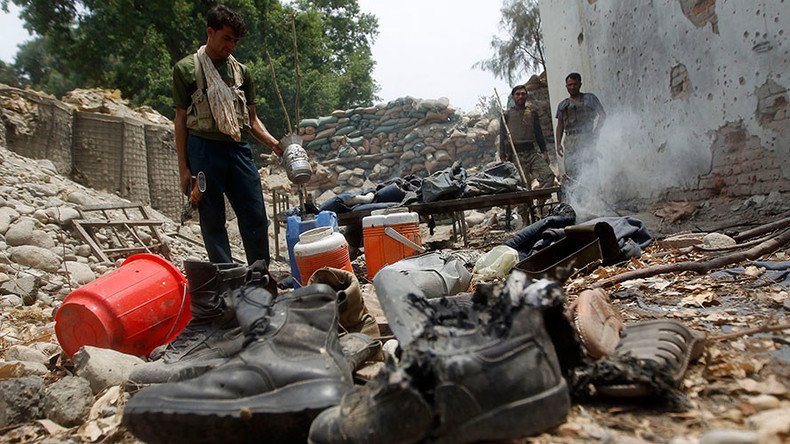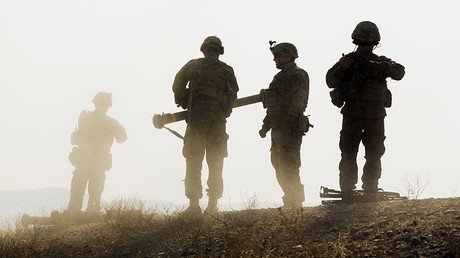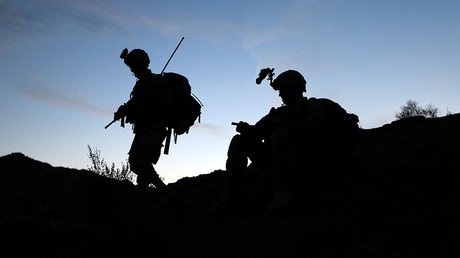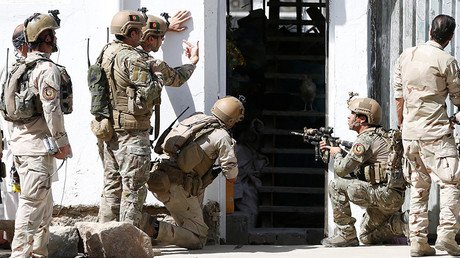‘I see a drone, I remove my SIM card’: Afghan villagers live in constant fear of US airstrikes

Afghanistan’s Nangarhar province has been one of the hardest hit by US airstrikes, which target Islamist militants but also hit civilians. In a video by RT’s Ruptly agency, locals shared what it was like to live under the constant risk of being bombed.
As a stronghold of both the Taliban and the emerging presence of the Islamic State (IS, formerly ISIS/ISIL) terrorist group, Nangarhar province saw 358 airstrikes by US forces in July alone – half of all the airstrikes in Afghanistan over the month. On August 11, the Afghan government said that at least 16 civilians, including women and children, had been killed in one bombing in the Haska Meena district, which the US military claimed was targeting militants.
In a new Ruptly video, villagers describe being in a state of constant anxiety because of the air raids.
“US jets fly over and patrol anytime, therefore civilians are living in fear and turn off their mobiles and remove their SIM cards. They break their SIM cards and buy another one,” a man from the village of Basakhel said. “Now people are trying to not use their phones.”
“Sometimes, if I see a drone flying over us, I become fearful and want to remove my SIM card from my mobile and put it far away from myself,” said another.
Oftentimes, the villagers said, the raids by American forces ended up mistakenly targeting innocent people.
“Many times the US night raids aren’t a success and civilians are the victims of the damage, and casualties. Some time ago, they attacked our village and captured the barbers of our village. After the capture and search they realized that they were not bad people and they [the barbers] were freed. Sometimes, during their night raids, they kill civilians and destroy their houses,” said a Basakhel villager.
“There was a doctor in a hospital and he was also targeted by a drone strike. Another man, who was a worker in the national solidarity program, was on the way to his house and a drone targeted and killed him,” recalled another man. “These are the kind of issues with drones and US night operations that are not successful.”
One tribal elder in the Khogyani district even accused American soldiers of killing civilians deliberately.
“First the US forces were saying that they were targeting the Taliban, but after some time they started saying sorry for the fact that they killed or targeted civilians. One example is a US operation in the Khogyani district where they entered a home, saw school boys studying in 9th grade, saw their face in a mirror and shot [a boy] with a sniper and said that they killed the Taliban,” said the elder.
“I have documents of that event and I talked with officials about the event. When the US forces left the house they completely blasted the home. Women and children were never Taliban.”
According to Ataullah Khogyani, the spokesman for the governor of Nangarhar province, such incidents happen because Islamist fighters try to blend into the peaceful population, making them more difficult to catch but also exposing more civilians to crossfire.
“Sometimes militants use civilian houses as their positions against US and Afghan forces,” Khogyani told Ruptly. “We want our people to not give space to the Taliban in their homes.”
According to a recent report by the United Nations, the level of civilians casualties in Afghanistan reached a record high in 2017, with 436 children killed in the first six months of the year, representing a 9 percent increase on the same time period in 2016. The number of women killed grew to 174, representing a rise of 23 percent.
An estimated 40 percent of deaths came at the hands of Taliban bombings and IEDs, while airstrikes from both the US and Afghan Air Force were responsible for a 43 percent rise in civilian casualties.















